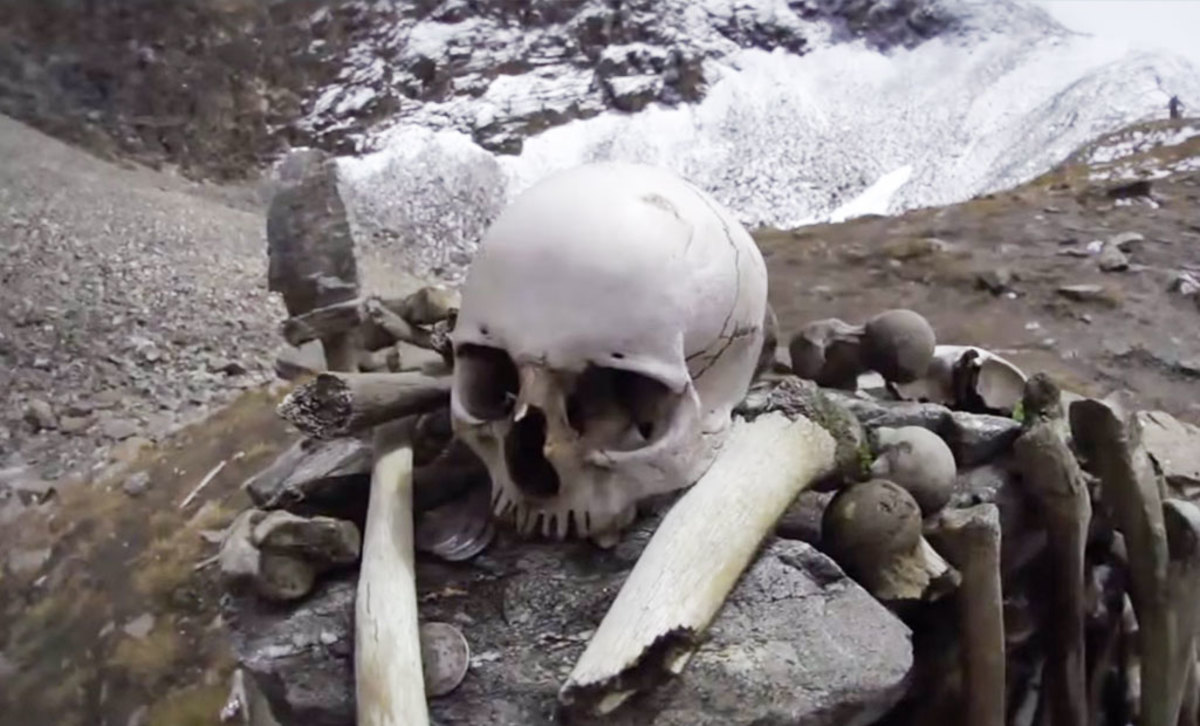Roopkund Lake, nestled amidst the majestic peaks of the Indian Himalayas, has become a site of intrigue and fascination. Situated at an altitude of over 16,000 feet, this remote glacial lake has captured the imagination of adventurers and scientists alike due to the discovery of hundreds of human skeletons scattered around its shores. This mysterious phenomenon has transformed Roopkund Lake into one of the most captivating archaeological and anthropological sites in the world.

The Discovery of Roopkund Lake
The discovery of Roopkund Lake dates back to the era of British rule in India, when it was first recognized as a favored trekking site. However, it wasn’t until 1942 that the perception of the lake underwent a profound shift. A British forest ranger happened upon a startling sight that would forever alter its reputation – a vast collection of human skeletons scattered in and around the lake’s vicinity. This unexpected find ignited a mixture of curiosity and bewilderment among both authorities and the local populace.

Unveiling the Mystery of Roopkund Lake
In 1942, H K Madhwal, an Indian forest official, made a startling discovery while exploring the vicinity of Roopkund Lake. Among the rugged terrain, he stumbled upon a chilling sight – hundreds of human skeletons strewn in and around the lake’s perimeter. This eerie find unveiled a perplexing mystery: a mysterious lake where an estimated 300 to 800 individuals met their tragic demise. Over time, the icy embrace of the Himalayas preserved these haunting remains. By the late 1950s, news of this macabre mountain discovery spread, sparking widespread interest and initiating a series of ongoing investigations that seek to unravel the enigma to this day.

Scientific Endeavors and Unraveling the Mystery
In the years that followed, scientific expeditions braved the harsh conditions of Roopkund Lake to uncover the secrets of its skeletal inhabitants. Despite the challenges posed by the remote and high-altitude location, advancements in scientific techniques such as DNA analysis and carbon dating have provided invaluable insights.

Recent research revealed that the 38 skeletons discovered at Roopkund Lake belonged to three distinct genetic groups and were deposited at the site over a 1,000-year period through multiple events. Among these groups was a South Asian cohort, whose remains were scattered from the 7th to the 10th centuries across various incidents. Additionally, researchers identified a novel group originating from the eastern Mediterranean, particularly the island of Crete, whose demise occurred in a single event during the 19th century. Intriguingly, there was also a sample exhibiting South-East Asian ancestry from the same period. To validate this unexpected discovery, the research team conducted a dietary analysis, which corroborated the findings of the DNA analysis.
Theories and Clues from the Past
Historical records and artifacts found in the region provided valuable clues about possible events surrounding the presence of the skeletons. Speculations range from large-scale pilgrimages to ancient trade routes traversing hazardous terrain. However, the cause of the mass mortality event remains debated, with theories including epidemics, natural disasters, or ritualistic sacrifices.
The Allure of Roopkund Lake

With increasing interest in Roopkund Lake, conservation efforts are paramount to protect its fragile ecosystem. Despite its remote location, the allure of Roopkund Lake persists, drawing adventurers, historians, and scientists eager to unravel its mysteries. Roopkund Lake, with its myriad human skeletons, continues to pose a puzzling mystery, intriguing both researchers and visitors. While scientific progress has illuminated certain facets of this enigma, many layers remain shrouded in mystery. Preserving this exceptional site and conducting additional research are essential steps toward uncovering deeper insights into ancient history and unraveling the narratives concealed within these silent bones.
